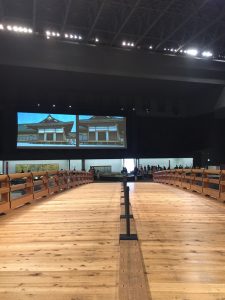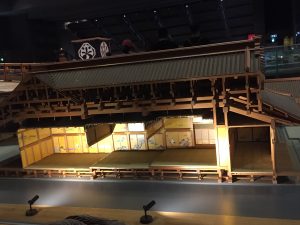I have not been to zoos or aquariums for over ten years, and like zoos, I always thought them as places imprisoning animals to suit purposes of human, whether financial or political. However, our visit to Tokyo Sea Life Park convinced my of another purpose of aquariums—education.
Although both institutions have the primary purpose of exhibiting animals to the public, the spacing is incredibly different between them. While the zoo is all open space, the aquarium is dimly lit and designed for a more immersive experience. At Ueno Zoo, most visitors are families, and there were activities suited for kids, like collecting stamps for animals; whereas the average age of visitors at Tokyo Sea Life Park was much bigger, with the majority being 10-30.
Although I am not sure how to make of these observations and differences on the age groups, I was inspired and moved by Tada-San’s presentation on aquarium education programs and response to Julian’s questions. Tada-San opened the presentation with a tuna lecture, telling us to first observe and sketch tuna and then showing us to above the tuna tank to see them from above, and finally letting us touch a real tuna. This tuna education is highly interactive, and far from my exception, was not just suited for children. Part of the education program for high schoolers, the tuna section is a great introduction to get students’ attention and interest and show them the amazing biological mechanism behind each body part. It was very lucky for us to have Tada-San, who is an energetic and honest gentleman passionate about delivering aquarium education and sharing his experience. According to him, the aquarium has been trying hard to bring high school and college students to the aquarium, and thus created various programs for different groups. Looking through the brochure, it was evident that the courses were thoughtfully planned and all of them had an introduction related to Japanese cuisine.
Although the aquarium still faces ethical issues as confining animals, my concern on this level was relieved by Tada-San’s passion and dedication, as he mentioned he had been working at aquariums for over 20 years trying to show people the educational purpose of aquariums.
After Tokyo Sea Life Park, we went to visit Prof. Selinger’s friend, Emi-San’s house. Thanks to her generosity and kindness, we had the opportunity to try on Yukata, a lighter and more casual version of kimono. The visit to her house was a great cultural immersion experience, and we got to practice the manners we learned about visiting a Japanese home. We also got to see the small buddhist and shinto shrines at Emi-San’s home, and how shinto and buddhism were immersed in Japanese daily life. Although exhausted, it was an amazing day—we pretty much passed out in the bed right after going back home.



